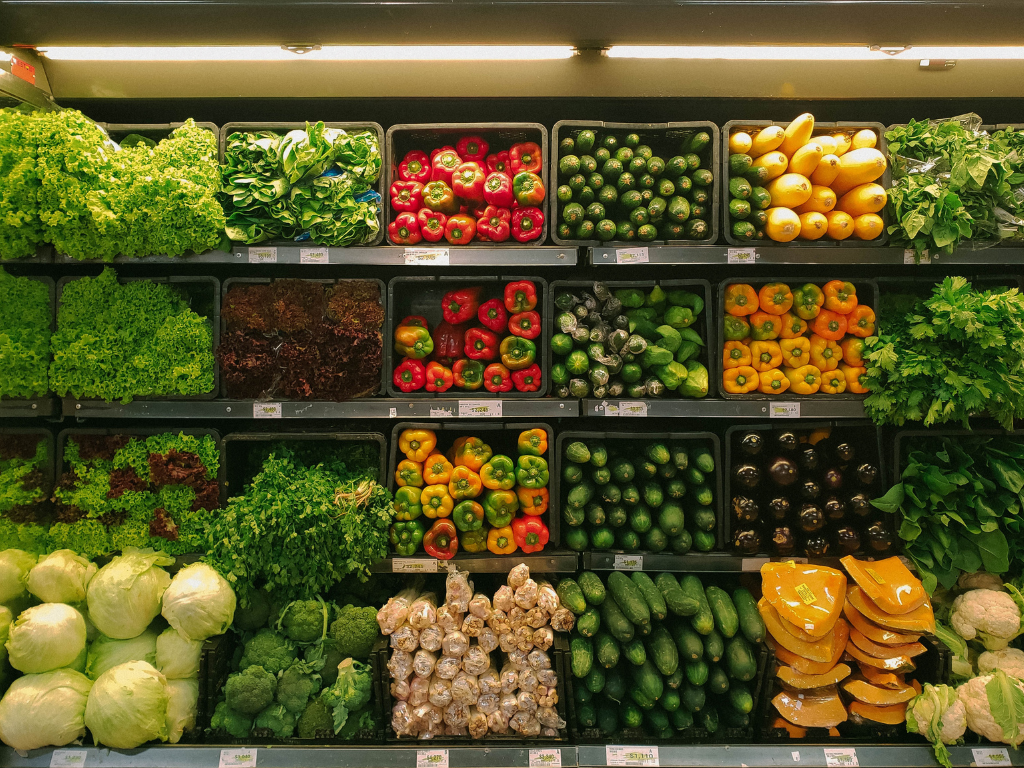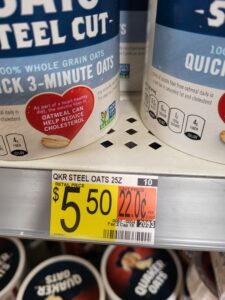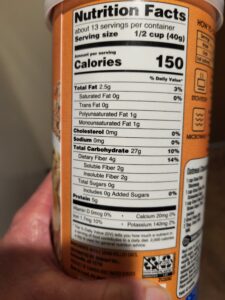Save Money Buying Groceries In Bulk
Save money on groceries by buying in bulk.
Buying in bulk is mass buying or buying in large quantities. In other words, buying in bulk is purchasing more than you need (for now). Because you will use the surplus later and have bought it on sale.
But with all money-saving strategies, you need a plan. There are rules and techniques that’ll help you be successful in executing your new financial freedom mission.
If you need a plan to save more money, read my article, a strategy to save money grocery shopping.
Before I get started, most people have never done a self-audit to see what’s really going on with the grocery budget. Do an audit on your grocery spending. Read my article 9 ways to audit your grocery spending and save money.
To save money buying groceries in bulk, there are common sense things to consider: a family of four will need more groceries than a single person. So, mass buying will “depends” on what you need and how often you use it. After all, it makes no sense to buy a pallet of vanilla extract if you don’t own a bakery or grocery store. It also doesn’t make sense to buy a case of pre-chopped salad if you don’t eat a lot (and I mean a lot) of salad.
You can stop wasting money on food.
First of all, you’ll need to know how much money you’ll want/need to save. Then you’ll have to look at what you need versus what you want. Of course, you’ll need a place to store it. Finally, you’ll need a deal-finding, game plan.
photo provided by unsplash
How Much Money Can You Save Buying Groceries In Bulk?
Buying in bulk will save you money, but how much you save will depend on what and how much you buy. If you only purchase one case of mac n cheese once a year, you’ll save far less than if you mass-bought all your groceries.
Magnifymoney.com reports you can save 25% on your groceries if you buy in bulk because the average family spends $2641 per person annually on groceries. This means an average family of 3 spends $7,923 on groceries annually.
The same family could save $1990 if they bought all their groceries in bulk. To ensure savings buy only the items that your meal planner calls for that are on sale.
Before You Go Shopping
Meal Planning
To maximize your ability to save money on groceries you’ll need to plan your meals ahead of time. The most common meal plan is the one-week meal plan. A good meal plan will include ingredients for all meals, snacks, and treats.
You will eat the same thing every Monday and you will eat the same thing every Tuesday. I’m sure you get the idea. If having a one-week meal plan is too boring for you, work out a two-week meal plan.
In this case, you would have the same meal every two weeks. Every other Monday you will have the same meal you had two weeks ago. Next, make a list of all the food items and ingredients you’ll need to serve these meals.
In this list, you should also include the amount you will need for each item for that period. This will make shopping easier. You should include items you already have because eventually, you will run out of these things.
Grocery List
The average grocery shopping list has items for a week, maybe two worth of daily needs. That’s the difference with buying in bulk. Your list is based on a system.
You’ll need to create a list based on what’s left in your surplus, upcoming events or holidays, and most importantly:
- Which coupons are available
- Unit price per ounce
- Generic versus brands
- And, any other special sales.
Coupons And Special Sales
Most frugal people know the sales cycle for the stores they shop at, and they maintain a level of food that will allow them to capitalize on the store’s sales cycle. Usually, that’s six to nine weeks, but it may differ where you shop.
A sale cycle is how often a particular item goes on sale. To learn your store’s sales cycle, you must pay attention (remember), or calendar track when items you need go on sale.
Coupons will save you a lot of money if you’re proactive. You need to make it a point to find coupons and use them. Something most people don’t know is you can stack coupons to increase your savings.
Unit Prices Per Ounce
To find the best deals, it’s essential to compare. Price comparing is usually comparing ounces to ounces. Some stores do this for you.
They put the amount per ounce on the store tag. Look at the Walmart tag below. Spoiler alert: the cost per ounce is in the orange field.
Looking at the shelf tag provided by Walmart, you know this is quaker oatmeal steel oats. The container is 25 ounces and the price per ounce is 22.0 cents.
If the store you shop at doesn’t provide this information. You can easily figure the price per ounce (using your cell phone) by dividing the total amount by the number of ounces.
In this case, the total amount of the container is $5.50 and the container is 25 oz.
$5.50/25=.22
Generic Versus Brands
If you buy generic brands, you’ll save 10 to 30% when compared to leading brands. Unfortunately, generics have gotten a bad name. Many consumers are hesitant to buy them because they believe they’re inferior to the “popular brands”.
Your major concern may be you’re afraid the nutritional value won’t be as good as the leading brands. You’re also concerned the flavor and texture won’t be as good as the highly-rated brands.
The Nutritional Value Of An Item Is On The Back Of That Item, “Nutrition Facts.”
Is the generic nutritionally the same as the store brand? It’s easy to find out by comparing the two items side by side. Look at the two pictures below:
- Be careful to compare “like” items. For example, you won’t compare a tomato to an orange.
- Don’t compare gourmet items to basic items. For example, you wouldn’t compare “Private Selection” brand mac n’ cheese to “Great Value” or
- even “Kraft”; technically, they aren’t in the same class.
Did you know about 90% of generic brands are manufactured by the same highly-rated brands that consumers prefer and love? If your focus is on nutritional value and brands are using the same supply chain, then you know the nutrition is equivalent. For example, Great Value (Walmart’s version) mac n’ cheese is made by Kraft.
Compare Flavor And Texture
We have all seen the taste test on TV. The idea is for you to taste items to determine which item you prefer. In this case, you’re taste-testing to see if you can tell the difference between the store brand or a leading brand.
The taste test can be simple:
- Have someone make for you a sample of the store brand and the generic brand.
- Without you knowing which is which (blindly), you taste-test them.
Which do you prefer? Is the store brand the winner or is it generic? Can you tell the difference?
Storing Your Surplus
Before you buy your groceries in bulk you need to have a place to store the surplus food. Canned foods including meats usually can be stored in a pantry, closet, or under a bed. Frozen foods need to be stored in a freezer.
Fresh fruits and vegetables are hard to store, but their frozen counterparts can be stored in a freezer indefinitely. It’s best if frozen fruits and vegetables are used within 12 months but if you have some left, it’s still safe to consume.
Save Money Buying Groceries In Bulk
Shopping
Now that you know what you need, how much you need, and where you will store the surplus food, it’s time to look for good deals.
Bulk buyers only have two tasks when grocery shopping:
- Shop for the next food planner period.
- Replenishing your food stockpile.
Where to shop
You can use this money-saving technique anywhere you shop. When shopping for groceries, you have choices to make, meaning more than one maker of a product like mac and cheese which is made by Kraft, Lean Cuisine, Stouffer’s, Marie Callender’s, and so many others. Price compare to find the lowest price. Not only is this true in your local grocery store but also the large discount stores like Costco and Sam’s, and many others.
What not to buy in bulk
Things you won’t use. This only makes sense because you are trying to save money. Why would you buy something you won’t use?
Also, things that go bad before you can use it. Think milk (most dairy products), lettuce, and eggs.
Pro tips for buying groceries in bulk:
- Stick to your meal planner
- Stick to your shopping list
- As much as possible buy only Items on sale
- Use discount clubs only when it saves you money
- Local grocery stores
If you need to take a deeper dive into saving money on groceries, Read my article 9 ways to audit your groceriy
Conclusion
You’re Only Saving Pennies?
Using price comparison while avoiding “brand-centric” habits is a real money saver when buying in bulk. You may be thinking, “you’re only talking about a few pennies,” and that’s true if you’re only talking about one container of oatmeal. But if you buy all your groceries in bulk, it will be much more than a few pennies.
You can save money buying groceries in bulk



